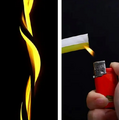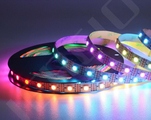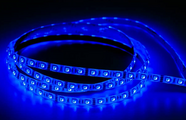Are you still worried about LED dimming?

LED lights are widely used in various fields of the lighting industry. LED stage lights in the stage lighting industry such as LED moving head lights, LED floodlights, LED wall washers, LED pattern effect lights and other stage LED lights have been recognized and loved by the majority of users. .
As a light source, LED dimming is very important. Not only to get a more comfortable environment at home, today, it is more important to reduce unnecessary electric light to further achieve the purpose of energy saving and emission reduction. Moreover, for LED light sources, dimming is easier to achieve than other fluorescent lamps, energy-saving lamps, high-pressure sodium lamps, etc., so dimming functions should be added to various types of LED lamps.
1. Dimming technology using DC power LED
It is easy to adjust the brightness of the LED by adjusting the forward current. The first thing that comes to mind is to change its driving current, because the brightness of the LED is almost directly proportional to its driving current.
1.1 Method to adjust forward current
The simplest way to adjust the LED current is to change the current detection resistor in series with the LED load. Almost all DC-DC constant current chips have an interface for detecting current, which is controlled by comparing the detected voltage with the reference voltage inside the chip. constant current. However, the value of this detection resistor is usually very small, only a few tenths of ohms. If you want to install a potentiometer of a few tenths of ohms on the wall to adjust the current, it is impossible, because the lead resistance will also be a few tenths of ohms. Therefore, some chips provide a control voltage interface, and changing the input control voltage can change its output constant current value.
1.2 Adjusting the forward current will shift the chromatogram.
However, adjusting the brightness by adjusting the forward current will cause a problem, that is, while adjusting the brightness, its spectrum and color temperature will also be changed. Because currently white LEDs are produced by using blue LEDs to excite yellow phosphors, when the forward current decreases, the brightness of the blue LEDs increases while the thickness of the yellow phosphors does not decrease proportionally, resulting in an increase in the dominant wavelength of the spectrum. For example: when the forward current is 350mA, the color temperature is 5734K, and when the forward current increases to 350mA, the color temperature shifts to 5636K. When the current decreases further, the color temperature will change to warmer colors.
Of course, these problems may not be a big problem in general actual lighting. However, in the LED system using RGB, it will cause color deviation, and the human eye is very sensitive to color deviation, so it is not allowed.
1.3 Adjusting current will cause serious problems that make the constant current source unable to work.
However, in specific implementation, dimming by adjusting forward current may cause a more serious problem.
We know that LEDs are usually driven by DC-DC constant current driving power sources, and this type of constant current driving source is usually divided into two types: boost type or buck type (of course there is also a buck-boost type, but due to low efficiency , expensive and not commonly used). Whether to use a boost type or a buck type is determined by the relationship between the power supply voltage and the LED load voltage. If the power supply voltage is lower than the load voltage, the boost type is used; if the power supply voltage is higher than the load voltage, the buck type is used. The forward voltage of an LED is determined by its forward current. It can be seen from the volt-ampere characteristics of LED that changes in forward current will cause corresponding changes in forward voltage. To be precise, a decrease in forward current will also cause a decrease in forward voltage. Therefore, when the current is reduced, the forward voltage of the LED also decreases. This changes the relationship between supply voltage and load voltage.
For example, in an LED lamp with an input of 24V, eight 1W high-power LEDs are connected in series. When the forward current is 350mA, the forward voltage of each LED is 3.3V. Then 8 LEDs connected in series are 26.4V, which is higher than the input voltage. Therefore, a boost-type constant current source should be used. However, in order to dim the light, the current is reduced to 100mA. At this time, the forward voltage is only 2.8V. If 8 LEDs are connected in series, it is 22.4V, and the load voltage becomes lower than the power supply voltage. In this way, the step-up constant current source cannot work at all, and the step-down type should be used. For a boost-type constant current source, it must work in a step-down mode. In the end, the LED will flicker. In fact, as long as a boost-type constant current source is used, flickering will almost certainly occur as long as the brightness is adjusted to a very low level when forward current dimming is used. Because the LED load voltage at that time must be lower than the power supply voltage. Because many people don't understand the problems, they always look for problems in the dimming circuit, which is futile.
Using a step-down constant current source will cause fewer problems, because if the original power supply voltage is higher than the load voltage, when the brightness is lowered, the load voltage will decrease, so a step-down constant current source is still needed. However, if the forward current is adjusted to a very low forward current, the load voltage of the LED will also become very low. At that time, the voltage step-down ratio will be very large, which may also exceed the normal operating range of this step-down constant current source, which will also cause it to Doesn't work and causes flickering.
1.4 Working at low brightness for a long time may reduce the efficiency of the buck constant current source and increase the temperature rise, making it unable to work.
Most people may think that downward dimming reduces the output power of the constant current source, so it is unlikely to increase the power consumption and temperature rise of the buck constant current source. As everyone knows, the reduction in forward voltage caused by reducing the forward current will reduce the step-down ratio. The efficiency of the step-down constant current source is related to the step-down ratio. The greater the step-down ratio, the lower the efficiency and the greater the power consumption on the chip.
1.5 Accurate dimming cannot be obtained by adjusting forward current
Because the forward current and light output are not completely proportional, and different LEDs will have different forward current and light output relationship curves. Therefore, it is difficult to achieve precise light output control by adjusting the forward current.
An LED is a diode, which can switch quickly. Its switching speed can be as high as microseconds or more. It is unmatched by any light-emitting device. Therefore, as long as the power supply is changed to a pulse constant current source and the pulse width is changed, the brightness can be changed. This method is called pulse width modulation (PWM) dimming. If the pulse period is tpwm and the pulse width is ton, then its working ratio D (or hole ratio) is ton/tpwm. Changing the working ratio of the constant current source pulse can change the brightness of the LED.
2.1 How to implement PWM dimming
The specific method to realize PWM dimming is to insert a MOS switch tube in series with the LED load, and the anode of this string of LEDs is powered by a constant current source.
Then a PWM signal is added to the gate of the MOS tube to quickly switch this string of LEDs on and off to achieve dimming. There are also many constant current chips with a PWM interface, which can directly receive PWM signals and then output to control the MOS switch tube. So what are the advantages and disadvantages of this PWM dimming method?
2.2 Advantages of pulse width modulation dimming
1. No chromatographic shift will occur. Because the LED always operates between full amplitude current and 0.
2. It can have extremely high dimming accuracy. Because the pulse waveform can be completely controlled to a very high accuracy, it is easy to achieve an accuracy of one ten thousandth.
3. Can be combined with digital control technology for control. Because any number can be easily converted into a PWM signal.
4. Even if the light is dimmed within a wide range, flickering will not occur. Because the working conditions of the constant current source (boost ratio or buck ratio) will not be changed, problems such as overheating are less likely to occur.
2.3 Issues to note when using pulse width dimming
1. Selection of pulse frequency: Because the LED is in a fast switching state, if the operating frequency is very low, the human eye will feel flickering. In order to make full use of the visual residual phenomenon of the human eye, its operating frequency should be higher than 100Hz, preferably 200Hz.
2. Eliminate the whistling sound caused by dimming: Although the human eye cannot detect the frequency above 200Hz, it is within the range of human hearing up to 20kHz. At this time, you may hear the sound of silk. There are two ways to solve this problem. One is to increase the switching frequency to above 20kHz, out of the range of human hearing. However, too high a frequency will also cause some problems, because the influence of various parasitic parameters will cause distortion of the pulse waveform (front and rear edges). This reduces the accuracy of dimming. Another method is to find the device that produces the sound and deal with it. In fact, the main sound-generating device is the ceramic capacitor at the output end, because ceramic capacitors are usually made of high dielectric constant ceramics, and these ceramics have piezoelectric properties. Under the action of 200Hz pulse, mechanical vibration will be generated and sound will be produced. The solution is to use tantalum capacitors instead. However, high-voltage tantalum capacitors are difficult to obtain and very expensive, which will increase the cost.
2. LED dimming using AC power supply
3. Use thyristor to dim LEDs
Ordinary incandescent lamps and halogen lamps usually use thyristors to dim them. Because incandescent lamps and halogen lamps are purely resistive devices, they do not require that the input voltage must be a sine wave, because their current waveform is always the same as the voltage waveform, so no matter how the voltage waveform deviates from the sine wave, as long as the effective value of the input voltage is changed, It can be dimmed. The use of thyristor is to cut the sine wave of alternating current to change its effective value. The load is connected in series with the thyristor switch.
Changing the voltage dividing ratio of the variable resistor can change its conduction angle, thereby achieving the purpose of changing its effective value. Usually this potentiometer has a switch, which is connected to the input terminal of n and is used to turn the light on and off. In addition to thyristors, there are also transistor trailing edge dimming technologies, etc. Since their basic problems are the same, they will not be introduced here.
3.1 Disadvantages and problems of thyristor dimming
However, there are a series of problems with thyristor dimming.
1. The thyristor destroys the waveform of the sine wave, thereby reducing the power factor value. Usually the PF is lower than 0.5, and the smaller the conduction angle, the worse the power factor (only 0.25 at 1/4 brightness).
2. Likewise, non-sinusoidal waveforms increase harmonic coefficients.
3. Non-sinusoidal waveforms will produce serious interference signals (EMI) on the line
4. It is easy to become unstable at low load, so a bleed resistor must be added. This bleeder resistor consumes at least 1-2 watts of power.
5. An unexpected problem will arise when the ordinary thyristor dimming circuit is output to the LED driving power supply, that is, the LC filter at the input end will cause the thyristor to oscillate. This oscillation is indifferent to incandescent lamps. Because of the thermal inertia of incandescent lamps, this oscillation is invisible to the human eye. But the LED driving power supply will produce audio noise and flicker.
3.2 Advantages of thyristor dimming
Although thyristor dimming has so many shortcomings and problems, it has certain advantages, that is, it has formed an alliance with incandescent halogen lamps and occupies a large dimming market. If LED wants to replace the position of incandescent and halogen lamps with thyristor dimming, it must also be compatible with thyristor dimming.
Specifically, in some places where thyristor-dimmable incandescent lamps or halogen lamps have been installed, thyristor dimmer switches and knobs have been installed on the wall, and two wires leading to the lamps have also been installed in the wall. Connecting wires. It is not easy to replace the thyristor switch on the wall or to increase the number of connecting wires. The simplest way is to leave nothing unchanged, just unscrew the incandescent lamp on the lamp head and replace it with a compatible thyristor switch. Light function LED bulbs will do. This strategy is just like LED fluorescent lamps. It is best to make them exactly the same size as the current T10 and T8 fluorescent lamps. It does not require professional electricians and ordinary people can directly replace them, so it can be quickly popularized. Therefore, many foreign manufacturers of LED driver ICs have developed ICs that are compatible with existing thyristor dimming.
The difference from general flyback ICs is that they can detect the conduction angle of the thyristor to determine the LED current for dimming. We are not going to introduce their working principles and performance in detail, because we do not Think this is the direction of LED dimming.
3.4 Problems and disadvantages of thyristor dimming compatible
Although many large multinational chip companies have launched chips and solutions that are compatible with existing silicon controlled dimming. However, this type of solution is not recommended for the following reasons:
1. SCR technology is an old technology with more than half a century. It has many shortcomings as mentioned above and is a technology that should be eliminated long ago. It should withdraw from the stage of history at the same time as incandescent lamps and halogen lamps.
2. Many of these chips claim to have PFC, which can improve the power factor. In fact, it only improves the power factor of the thyristor load, making them look close to pure resistance incandescent lamps and halogen lamps, without improving the The power factor of the entire system including the thyristor.
3. The overall efficiency of all thyristor-compatible LED dimming systems is very low, and some do not consider the loss of the bleeder resistor required for stable operation, completely damaging the high energy efficiency of the LED.
4. All thyristor LED dimming systems also adjust the forward current of the LED, which has the disadvantages of chromatographic shift mentioned earlier.
5. The proportion of incandescent lamps and halogen lamps with thyristor dimming installed is less than 1/10,000, while the proportion of thyristor switches installed in the wall is even less than 1/10,000 with thyristor dimming lamps. None, because most of the ones equipped with thyristor dimming are table lamps, bedside lamps, and standing lamps. What's more, there are dozens of thyristor and transistor dimmer switches of different specifications on the market. In fact, it is impossible for the developed IC to be compatible with all thyristor switches, but only a small part of them.
6. LED is a brand new genesis technology with unparalleled advantages. There is absolutely no need to sacrifice the advantages of LEDs to take care of backward thyristors. It is even more inappropriate to install a new thyristor switch on the wall to achieve LED dimming.
4. Future LED dimming system
So what kind of dimming system should be used for LEDs?
4.1 PWM dimming
As mentioned before, it is best to use PWM dimming for LED dimming. When using PWM dimming, you can install a simple PWM generator in the wall switch, and then use a potentiometer to control the PWM working ratio to achieve dimming. But if you still want to turn the light on and off, then you need to add another pair of wires. Therefore, it is not compatible with the leads of the thyristor switch in the original wall. The original thyristor switch only has two leads, which can both dim and switch. This advantage is difficult to be compatible with. However, in fact, the most commonly used dimming lamps are table lamps or standing lamps. Those dimmer switches are installed on the power cord and not in the wall, so there is no need to use two leads in the wall. In other words, PWM dimming can be directly applied to dimming desk lamps.
4.2 Segmented switch dimming
A company in Taiwan has launched a four-stage switch dimming called EZ-Dimming called GM6182, which is a good solution. It can achieve 4-stage dimming using only ordinary light switches on the wall. The first time it is turned on is full brightness, the second time it is turned on is 60% brightness, the third time it is turned on is 40% brightness, and the fourth time it is turned on is 20%. brightness. The advantage of this system is that it can be dimmed using a regular wall switch. And its power factor is as high as 0.92 or more. There is no concern about generating interference signals. The disadvantage is that it cannot be continuously dimmed. It's also a bit more troublesome to operate.
4.3 Remote control dimming
Use an infrared remote control to dim the LED. This is of course the most ideal solution. Can switch lights on and off, and use PWM to continuously dim. The disadvantages are high cost, no unified specifications, and can only be used in high-end residences.
In fact, we should go back and think about what our main purpose of dimming should be. All the aforementioned dimming purposes are to meet the needs of people at home for different light intensities in different situations. For example, it may be darker when watching TV and brighter when reading. These are mostly in residences. Few offices, shopping malls, factories, and schools install dimming lights. Moreover, most of these places are equipped with fluorescent lamps and energy-saving lamps, and it is impossible to dim them or it is difficult to achieve continuous dimming.
5. Epoch-making dimming for energy saving
Since humans have realized that they must do everything possible to save energy and reduce emissions in order to solve the urgent problem of atmospheric warming, how to reduce lighting electricity consumption has been put on the agenda as an important issue. Because lighting electricity accounts for 20% of total energy consumption. Fortunately, efficient and energy-saving LEDs have emerged. LEDs themselves are more than 5 times more energy-saving than incandescent lamps, and about twice as energy-saving as fluorescent lamps and energy-saving lamps. They are not as energy-saving as fluorescent lamps and energy-saving lamps. Contains mercury. If dimming can also be used to save energy, it is also a very important means of energy saving. But in the past, it was difficult to dim all light sources, and ease of dimming is a great advantage of LEDs. Because in many situations there is actually no need to turn on the lights, or at least not so bright, but the lights are turned on very brightly, such as street lights from midnight to dawn; the lights in the subway car when it is driving from underground to the ground in the suburbs; more common Even when the sun is shining, fluorescent lights in offices, schools, factories, etc. that are close to the windows are still on. I don’t know how much electricity is wasted in these places every day! In the past, because high-pressure sodium lamps, fluorescent lamps, ceiling lamps, and energy-saving lamps could not be dimmed at all, we had to forget about it. Now that we switch to LED, we can adjust the light freely, and this energy can be completely saved! Therefore, for lamp dimming, home wall dimming is not the main application, and the market is also very small. On the contrary, on-demand dimming of street lamps, offices, shopping malls, schools, and factories is a more important occasion. Not only is the market huge, but the energy saving is considerable. What these occasions require is not manual dimming but automatic dimming and intelligent dimming!
5.1 Dimming of street lights
Generally speaking, street lights are of little use after midnight, so the usual approach is to turn off the lights or turn on half the brightness after 12 o'clock. But the most reasonable approach is to control the brightness of street lights according to traffic flow, or even to control the brightness completely adaptively.
In order to achieve this kind of intelligent dimming, it is actually very simple. This can be achieved as long as the curve of the traffic flow statistics in this area is input to a single-chip computer, and the PWM dimming signal is given to the constant current drive source based on this curve.
5.2 Photosensitive automatic dimming LED lights
To reduce unnecessary lighting in strong sunlight, photosensitive auto-dimming LED fluorescent lamps (or any other LED lamps) can be used.
The function of the photosensitive element is to sense the surrounding sunlight. If the sunlight is stronger, it will output a PWM signal to all LED lamps (such as LED fluorescent lamps) close to the sunlight to dim their brightness. A dimming signal generator can adjust many LED lamps, as long as the constant current drive source of these lamps has a PWM dimming control interface. The dimming system itself has an efficiency of over 92%. And there is no compatibility problem with the wall thyristor dimming circuit. This kind of fully automatic adaptive energy-saving dimming cannot be achieved by any gas discharge tube such as fluorescent lamps, energy-saving lamps, high-pressure sodium lamps, etc., but it is what LED lamps are best at.





